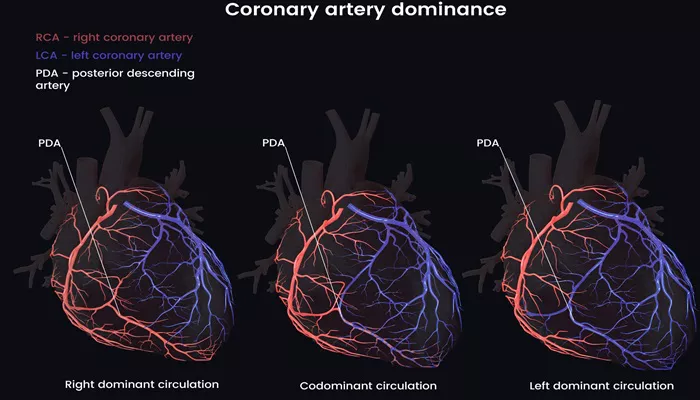Tortuous coronary arteries are characterized by abnormal twists and turns in the coronary vessels that supply blood to the heart muscle. This condition can have significant implications for cardiovascular health, including the potential for ischemia, reduced blood flow, and complications during medical procedures. As a cardiologist, I will discuss the causes of tortuous coronary arteries, the mechanisms behind their development, and the clinical significance of this condition.
What Are Tortuous Coronary Arteries?
Tortuous coronary arteries refer to coronary vessels that exhibit unusual curvature or elongation. This anatomical variation can be observed during diagnostic imaging, such as angiography, and may be associated with various cardiovascular conditions.
Characteristics of Tortuous Coronary Arteries
Curvature: The arteries may appear twisted or coiled, which can affect blood flow dynamics.
Increased Length: Tortuous arteries are often longer than normal, which can lead to increased resistance to blood flow.
Kinking: In some cases, the arteries may kink at certain points, further complicating blood flow.
Causes of Tortuous Coronary Arteries
The development of tortuous coronary arteries can be attributed to several factors, including genetic predisposition, age-related changes, and underlying health conditions. Here are the primary causes:
1. Aging
As individuals age, the structure of blood vessels can change. The walls of arteries may become less elastic, leading to increased tortuosity. This is often due to:
Degeneration of Elastic Fibers: The loss of elastin in the arterial wall can lead to stiffness and changes in shape.
Atherosclerosis: The buildup of plaque in the arteries can cause them to become rigid and tortuous over time.
see also: What Type of Fatty Acid Increases Heart Disease Risk?
2. Hypertension
Chronic high blood pressure can contribute to the development of tortuous coronary arteries. The increased pressure can lead to:
Arterial Remodeling: The arteries may change shape in response to the increased pressure, resulting in tortuosity.
Increased Shear Stress: Elevated blood pressure can cause increased shear stress on the arterial walls, leading to structural changes.
3. Genetic Factors
Certain genetic conditions can predispose individuals to develop tortuous arteries. Examples include:
Arterial Tortuosity Syndrome: This rare genetic disorder is characterized by generalized tortuosity of major arteries and may lead to cardiovascular complications.
Fibromuscular Dysplasia: This condition affects the blood vessels and can lead to abnormalities, including tortuosity, particularly in younger individuals.
4. Diabetes Mellitus
Diabetes can have a profound impact on vascular health. The condition is associated with:
Endothelial Dysfunction: Diabetes can damage the lining of blood vessels, leading to changes in structure and increased tortuosity.
Increased Risk of Atherosclerosis: Individuals with diabetes are at a higher risk of developing atherosclerosis, which can contribute to arterial tortuosity.
5. Inflammation
Chronic inflammation in the body can lead to changes in blood vessel structure. Conditions such as:
Rheumatoid Arthritis: This autoimmune condition can cause systemic inflammation, affecting blood vessels and potentially leading to tortuosity.
Systemic Lupus Erythematosus (SLE): Another autoimmune disorder that can contribute to vascular changes and tortuosity.
6. Mechanical Factors
Certain mechanical factors can also contribute to the development of tortuous coronary arteries:
Traction Forces: The movement of the heart during the cardiac cycle can create traction forces on the coronary arteries, leading to elongation and twisting.
Cardiac Positioning: Changes in body position or heart size can affect the shape and orientation of the coronary arteries.
Clinical Significance of Tortuous Coronary Arteries
Tortuous coronary arteries can have several clinical implications, including:
1. Impaired Blood Flow
The abnormal curvature and length of tortuous arteries can lead to altered blood flow dynamics. This may result in:
Increased Resistance: The twists and turns can create turbulence, increasing resistance to blood flow and potentially leading to ischemia.
Reduced Perfusion: In some cases, the blood supply to the heart muscle may be compromised, leading to chest pain or angina.
2. Complications During Procedures
Tortuous coronary arteries can complicate diagnostic and therapeutic procedures, such as:
Coronary Angiography: The presence of tortuous arteries can make it more challenging to navigate catheters during angiographic procedures.
Stenting and Angioplasty: The risk of complications may increase when placing stents or performing angioplasty in tortuous vessels.
3. Increased Risk of Spontaneous Coronary Artery Dissection (SCAD)
Tortuous coronary arteries may be associated with an increased risk of SCAD, a condition where a tear forms in the artery wall. This can lead to:
Acute Coronary Syndrome: SCAD can result in chest pain, heart attacks, and other serious complications.
Recurrence: Patients with tortuous arteries may experience recurrent episodes of SCAD.
Diagnosis of Tortuous Coronary Arteries
Tortuous coronary arteries are typically diagnosed through imaging studies. Common diagnostic methods include:
Coronary Angiography: This is the gold standard for visualizing coronary arteries. It involves injecting a contrast dye into the coronary arteries and taking X-ray images to assess their structure.
CT Angiography: This non-invasive imaging technique provides detailed images of the coronary arteries and can help identify tortuosity.
Stress Testing: In some cases, stress tests may be performed to evaluate the heart’s response to physical activity and assess for ischemia.
Conclusion
Tortuous coronary arteries are a common anatomical variation that can have significant implications for cardiovascular health. Understanding the causes of tortuosity, its clinical significance, and potential treatment options is essential for managing patients with this condition. By addressing underlying risk factors and adopting a proactive approach to cardiovascular health, individuals can reduce the risk of complications associated with tortuous coronary arteries.

